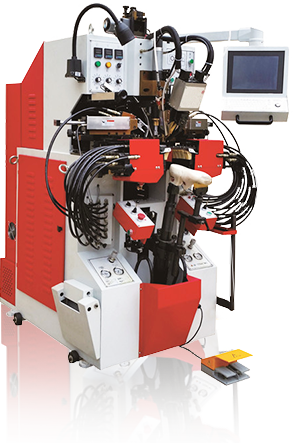The leather industry's economic operation in 2019 released by the China Leather Association shows that in 2019, the leather industry above designated size (shoes, bags, leather, leather clothing, fur and products) will achieve sales revenue and profits of 10981.99 billion yuan and 65.837 billion yuan. Yuan, a year-on-year decrease of 0.87% and 1.96% respectively; in 2019, the leather industry achieved export value of USD 86.845 billion, an increase of 1.5% year-on-year.
According to the analysis of China Leather Association, in 2019, under the difficult internal and external environment, the national leather industry has maintained a relatively stable economic development. Although the industry's exports have slightly increased, they are affected by Sino-US trade frictions. The decline is obvious, and the downward pressure on the industry has increased significantly.
From the production point of view, in 2019 my country's light leather production above designated size was 574 million square meters, and Hebei Province had the largest output, accounting for 33.6%. In the downstream products industry, the output of fur garments above a certain scale increased, the output of leather shoe and boots enterprises above a certain scale increased slightly, and the output of leather garments declined. In 2019, the output of fur clothing enterprises above designated size in my country was 4.77 million pieces, an increase of 22.82% year-on-year; the output of leather shoe companies above designated size was 3.947 billion pairs, an increase of 1.79% year-on-year; the output of leather garment enterprises above designated size was 66.623 million pieces, a year-on-year decrease of 9.22%.
In 2019, my country's leather industry exports continued to decline in 2015, 2016, and recovered growth in 2017, 2018, and 2019, and showed a slight growth trend, and the export growth rate increased by 1.45 percentage points over 2018. The increase in exports mainly comes from fur clothing and footwear products, of which fur clothing contributes a maximum of 0.65% to the export growth rate; followed by footwear products, the growth rate contribution is 0.57%; leather clothing and travel supplies and luggage contribute to the export growth rate It was -0.07% and 0.16%. In the export market, the EU replaced the United States as the largest export market. With the deepening of the “Belt and Road” initiative, in 2019, my country's leather industry exports to countries along the “Belt and Road” reached 28.47 billion US dollars, an increase of 11.4% year-on-year, accounting for 32.8% of the total leather industry exports. From the perspective of exporting provinces and cities, in 2019, my country's leather industry exports are mainly concentrated in three provinces, Guangdong, Zhejiang, and Fujian, with exports accounting for 63.4%. Although Guangdong ranked first in export value, it fell by 5.5% year-on-year; Zhejiang increased by 0.5% year-on-year, and Fujian exports increased by 6.9% year-on-year.
In 2019, my country's leather industry imports increased slightly, with a total import volume of 15.548 billion US dollars, an increase of 2.7% year-on-year. Among them, footwear contributed a maximum of 5.97% to the growth rate of imports, 4.18% to travel goods and luggage; raw materials such as semi-finished leather, finished leather and tanned fur contributed -3.37% to the growth rate of imports.
From the perspective of regional imports, the total imports of Shanghai, Jiangsu and Guangdong accounted for 66.6%. Among them, Shanghai is mainly based on product imports, accounting for 38.9% of China's total footwear imports, and 72.2% of total luggage imports; Guangdong is mainly based on raw materials imports, accounting for 50.6% of China's finished leather imports, and 35% of semi-finished leather imports %. The EU and ASEAN are the two main sources of imports for the leather industry, with imports of US$5.38 billion and US$5.12 billion, accounting for 67.5% of the total. Imports of leather products from ASEAN increased by 22% year-on-year. This is after ASEAN replaced the EU in 2017 as the largest source of imports for my country's leather industry, it was again overtaken by the EU, but the difference in import value between the two is very small.
Since the beginning of this year, the spread of the New Coronary Pneumonia epidemic has caused a deep impact on the global leather industry chain. At present, the production of enterprises is gradually recovering in an orderly manner, but the situation abroad is more severe, which brings great challenges and crises to the development of the industry. In the post-epidemic era, the leather industry must accelerate digitalization, intelligent transformation and marketing models, technological innovation, and at the same time build a more secure, green, transparent and sustainable industrial chain. "China Quality News"







